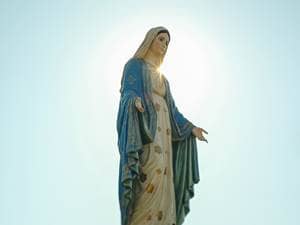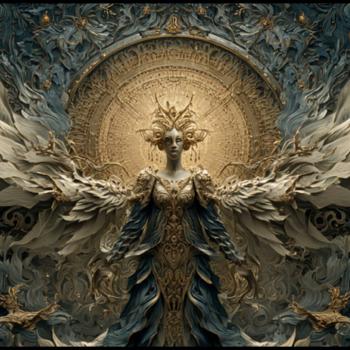
Catholics do not pray to statues. Catholics are Christians and, as such, do not worship anything or anyone but God. Praying to statues would constitute idolatry, something that every Catholic authority condemns. Catholics do venerate images and statues, just as Orthodox Christians venerate icons. Veneration, however, is a way of respecting the truth that lies behind the image. To venerate a statue of Mary is to respect and honor her. The Catholic Catechism teaches that “The honor paid to sacred images is a ‘respectful veneration,’ not the adoration due to God alone.”
Catholics commonly have statues in their churches and chapels as a way of reminding members of the congregation of the person depicted by the statue. This has been compared by many Catholics to looking at a picture of a beloved family member, like a mother, in order to remember her. No one believes that the mother is actually sitting in a tiny frame on a desk. Looking at the picture of the mother, however, serves as a reminder to call her or evokes happy times together. Catholic statues are used in much the same way. No Catholic believes that a stone statue depicting Jesus carrying the cross is Christ himself standing on a small ledge in a chapel. Instead, the statue serves as a reminder of what he did for his people.
In addition to helping Catholics remember and think about various biblical characters and events, statues and paintings serve as teaching tools in the Catholic Church. Stained glass windows, statues, carvings, and paintings in Catholic churches almost always depict some important event from the Bible or from one of the saints. A statue of Mary holding the infant Jesus, for example, might be a way of showing Jesus’s birth. Similarly, a stained-glass window might show Jesus ascending into heaven after his resurrection, and a series of carvings might depict Christ’s long walk through Jerusalem on the way to his crucifixion. Such artwork is meant to help those who are unfamiliar with the Bible or unable to read visualize the story of Christ. Protestants and other denominations do this with pictures and children’s books during Sunday school and at home. These things are not idols; they are teaching tools. For most of history, the average person could neither read nor write, and copies of the Bible were rare. They could, however, look at a series of stained-glass windows and “read” the story there.
Some people claim that Catholics worship statues by pointing to examples of Catholics kneeling before statues, lighting candles in front of them, or decorating the statues with flowers. These are simply devotional practices that help the faithful express their devotion. It is not unlike the common practice of lighting candles or laying flowers in front of pictures of famous people who have died tragically. Many Catholics will kneel and pray in front of a statue, but they are not praying to the statue. The statue is simply affording them a visual reminder of unseen realities.
3/23/2021 6:32:40 PM









